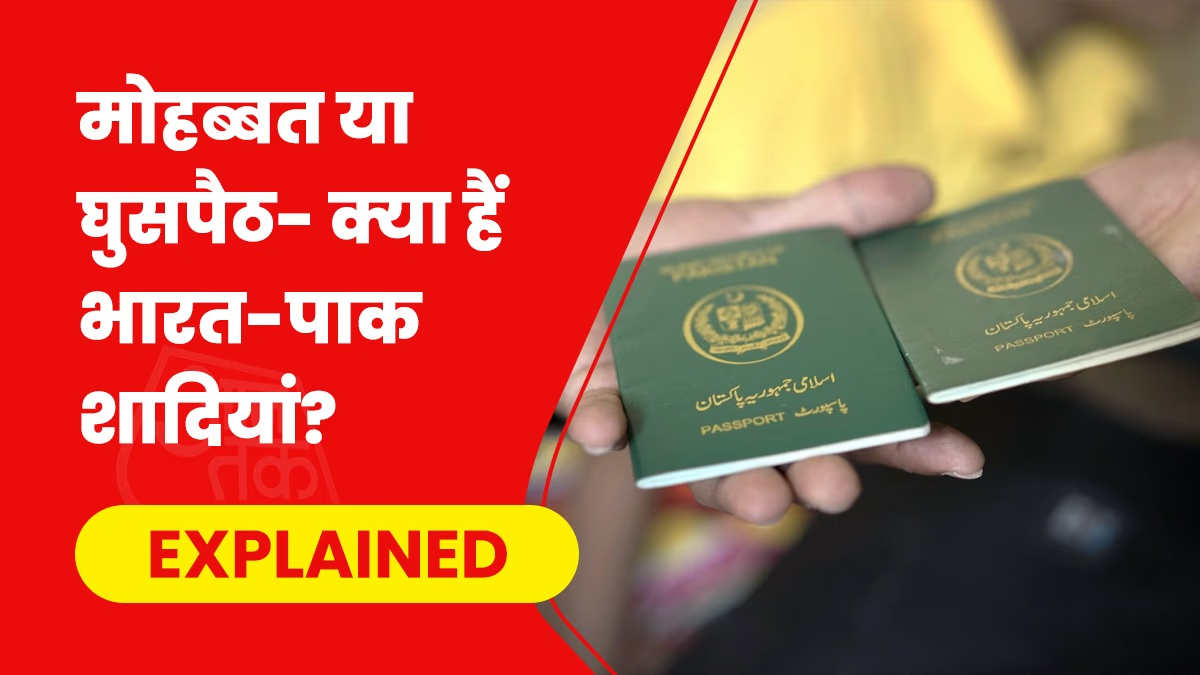Despite the often-strained political ties between India and Pakistan, marriages between citizens of the two countries, particularly among Muslim families, have been quite common. Following the terror attack in Pahalgam, all Pakistani citizens have been served with a 'Leave India' notice. Most people who entered legally have been sent back across the border, while those residing illegally are being identified. This raises questions such as why marriages between these countries are so prevalent and whether they facilitate easier movement between India and its neighbor.
While the decision of whom to marry is a personal one, generally, individuals try to avoid marrying citizens from a rival nation, such as North Korea or the USA, or Iran and Iraq. However, the dynamic is different between India and Pakistan. Since Partition, the relationship has never fully normalized, yet marriages continue to occur.
The aftermath of the Pahalgam attack and subsequent notice to leave has brought more clarity to these relationships.
No definitive data exists on the number of marriages annually, as it might be classified, but reports suggest hundreds of such unions occur yearly, particularly in border areas like Kashmir, Rajasthan, Punjab, and Gujarat. According to a Hindustan Times report, approximately 200 cross-border alliances happen each year in western Rajasthan, especially in Jaisalmer and Barmer. The pattern is similar near Kashmir and Gujarat's border with Pakistan.

Source: aajtak
The predominant reasons behind these marriages are social. Before Partition, several families lived in the same villages or towns, and after 1947, they were separated. Thus, familial ties still exist on both sides. Marriages help maintain these connections. In regions like Rajasthan, Punjab, and Sindh, language, attire, cuisine, and traditions are strikingly similar, enabling easy connectivity during interactions, often leading to familial bonds. Today's social media platforms further facilitate these connections, transforming casual interactions into matrimonial arrangements.
Pakistani citizens marrying Indians receive a special visa to reside in India, though the process isn't straightforward. Initially, an X visa is issued, meant for spouses and close family members, lasting six months to a year before needing renewal, pending the citizenship process.
Marriage registration and police verification are prerequisites for obtaining an X visa.
In specific cases, especially for Pakistani citizens from Hindu, Sikh, Jain, Buddhist, Christian, or Parsi communities, a Long-term Visa (LTV) is granted. This is considered part of the citizenship pathway.
Indian citizenship post-marriage requires meeting multiple conditions, such as residing in India for at least seven years. For Pakistani citizens, security checks are stringent. Another condition is that a Pakistani woman who marries into an Indian family will receive a visa specific to her husband's or in-law's city. She requires police permission to travel elsewhere.

Source: aajtak
Hindi For Intelligence agencies have repeatedly tried espionage using honey traps or fraudulent marriages. Incidents have occurred at the Rajasthan and Punjab borders where Pakistani women married Indian men, allegedly as part of espionage plots. Given such situations, visas aren't easily granted, and when they are, RAW and military intelligence maintain stringent surveillance.
Beyond marriage, Pakistanis have continuously visited India, supported by various visas. Unlike tourist visas, Pakistanis utilize visitor visas, requiring documentation of their local contacts. The Long-Term Visa caters to minorities from Pakistan, Bangladesh, and Afghanistan seeking Indian citizenship. Medical visas are common, as India offers excellent healthcare at relatively low costs. Bilateral agreements allow pilgrimages between India and Pakistan.
Despite tensions, both countries permit entry, though suspicion follows. Specific routes exist for different visa types, like distinct pathways for those seeking medical care versus those on pilgrimages. Visitors can't freely explore but must adhere to designated locations. An Indian citizen also requires city-specific visas to visit Pakistan, detailing which cities they intend to visit.
If authorized for Lahore, Islamabad, and Karachi, a visitor can't travel to Peshawar or Sialkot without breaching the Foreigners Act, risking arrest. Pakistan isn't as welcoming to Indians, who are barred from certain sensitive zones.
Pakistanis are considered high-risk visitors in India, with monitored movements. Before entry is granted, thorough checks occur. Often, individuals resort to illegal methods.
The Nepal-India border facilitates easier access, with Pakistanis reaching Nepal first, then entering India. For example, around two years ago, Seema Haider entered India via Nepal. In April last year, two Pakistani nationals were arrested by UP ATS for illegally entering India via Nepal, suspected of ISI-backed terrorist activities.
Tunnels have been used for smuggling terrorists and weapons. Since the 1990s, over 10 tunnels have been discovered along borders, primarily in Punjab and Jammu & Kashmir.
Another method involves legally entering India with valid documents but overstaying by assuming new identities or relocating. These cases are challenging to detect.




